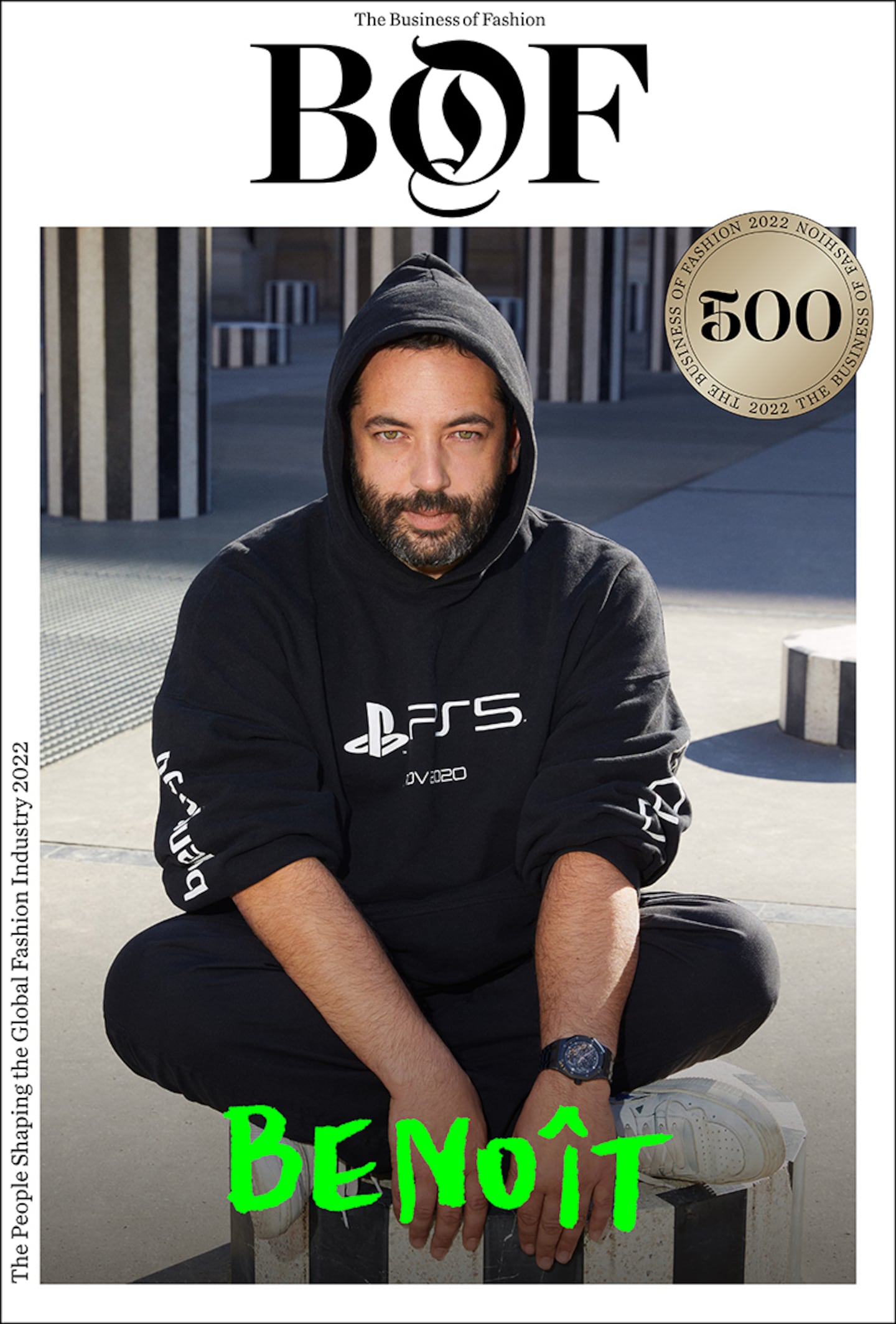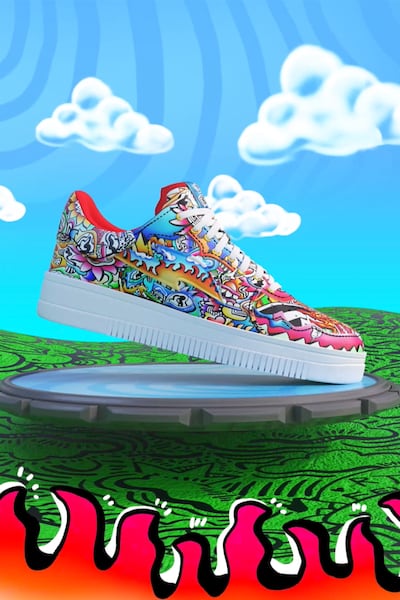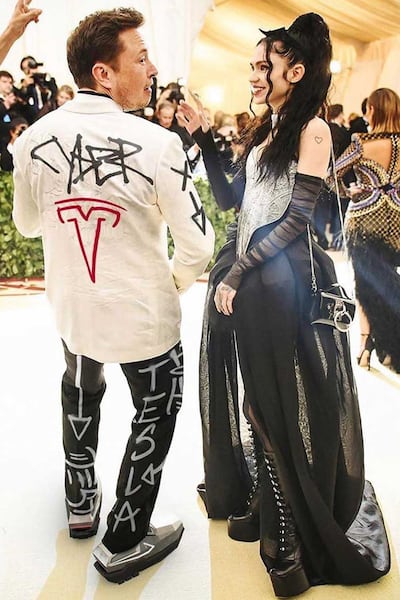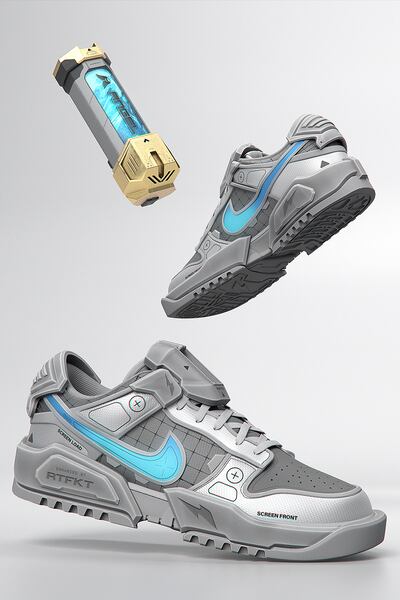
The Business of Fashion
Agenda-setting intelligence, analysis and advice for the global fashion community.

Agenda-setting intelligence, analysis and advice for the global fashion community.

PARIS — Benoit Pagotto believes the next wave of breakout fashion brands will sell virtual looks to a generation who grew up with video games. The shift, he says, will be bigger than the streetwear revolution that powered the rise of Supreme and Off-White and transformed the business models of mega-labels from Gucci to Dior.
“Some of my best memories of spending time with my friends as a kid — it’s stuff we did in video games,” says Pagotto, smoking in a black Balenciaga hoodie at a streetside cafe in central Paris.
“I was a weirdo in my generation, but now every 13-year-old is a gamer. And most fashion brands — even Supreme — they don’t understand.”
Last December, sportswear giant Nike made a big bet on Pagotto’s thesis, acquiring his virtual fashion brand RTFKT less than two years after launch. In a statement announcing the transaction, RTFKT appeared in the pantheon of Nike Inc.’s multi-billion-dollar megabrands Nike, Jordan and Converse.
ADVERTISEMENT
Just months before, RTFKT had made headlines for selling $3.1 million of limited-edition virtual sneakers priced from $3,000 to $10,000 a pair in under seven minutes. The coup — pulled off by a team of only five people, unencumbered by the materials, manufacturing and distribution costs that come with selling physical goods — illustrated just how profitable virtual fashion could be for those with technical know-how and the cultural savvy to make owning it a “flex” online.
Designed by digital artist Fewocious and released as non-fungible tokens (NFTs), the sneakers “had three key things: the creator story, scarcity and the right price points,” says Pagotto.

By year’s end, RTFKT had generated $180 million in revenue with a team of just 15. “Compare this to the money that Nike makes per employee — we are one of the most profitable businesses in the world,” says Pagotto.
A back of the envelope calculation supports his point. In 2021, Nike generated $44.5 billion in sales with a workforce of about 73,000 people, or about $610,000 per employee. The same year RTFKT generated more than $12 million per employee.
“It’s the efficiency you can have when your brand is mainly digital,” he says. “But you need to understand the tech, the content and the culture.”
In 2019, when Pagotto began pitching RTFKT to investors, the first slide of his presentation said: “Making Nike’s 2025 Roadmap Happen in 2020.” By this, he meant building a digital-first business, “90 percent digital, 10 percent physical, which is to me the model for a true lifestyle brand of the future,” he explains.
His plan was rooted in two core convictions: (1) that our digital possessions would soon be more valuable than our physical possessions, both emotionally and financially, and (2) that the value of a brand was increasingly linked to the strength of its community.
Demand for collectibles like RTFKT’s Fewocious sneakers exploded in 2021, in part fuelled by crypto speculation that saw bitcoin and ethereum hit all-time highs. But the market has since fallen back to earth and remains niche. The opportunity in virtual fashion made for video games, however, is significant.
ADVERTISEMENT
Epic Games’ Fortnite, which attracts between 2.9 and 4 million players at any given time, generated $5.8 billion in revenue in 2021, much of it from selling “skins” which change the appearance of characters. According to DMarket, a Los Angeles-based marketplace for NFTs and virtual goods, the global market for skins is already worth $40 billion a year.
“NFTs are still a small world but gaming is huge, with millions of people playing everyday,” says Pagotto. “Fortnite sells more fashion than most fashion labels.”
In this space, community engagement is central to the power of a brand. “It’s very important who your community is because they are the ones representing you daily and they’re the ones who are going to build on top of you and co-create your brand,“ says Pagotto.
Nike was skilled at harnessing scarcity and creativity to generate desire, and had developed a successful playbook for limited-editions drops and artist collaborations for its physical products, but was slower to seize the opportunity in digital goods and cautious about loosening control over its carefully managed brands.
“We wanted to build Nike for digital creators,” says Pagotto. “Most brands define what they represent; we do this with the community. We’re the main input, but they remix it, co-create it.”
Louis Vuitton became the first major luxury brand to develop skins for video games when it partnered with Riot Games’ League of Legends back in 2019. But brands really took notice after rapper Travis Scott’s Fortnite concert series in April 2020, which offered attendees special skins and, at its peak, attracted 12.3 million concurrent players. It was becoming clear that video games could be at least as powerful a cultural phenomenon as the hip-hop and skateboarding scenes that gave rise to the streetwear boom, and that the opportunity in virtual fashion was real.
“These digital products have a kinship with streetwear in that the t-shirt is not the value — the scarcity is the value, the community is the value — but the opportunity is much bigger than streetwear because of the scale of the tech,” says Ian Rogers, LVMH’s former chief digital officer who, in 2020, joined crypto wallet maker Ledger, an early investor in RTFKT. “It’s like Supreme for the era of digital identity.”
Pagotto has a sharp mind. He also has years of experience in three domains that proved critical to the early success of RTFKT: gaming, fashion and branding.
ADVERTISEMENT
The Frenchman grew up in the working-class suburbs outside Paris. His mother was a nurse. His father was a draughtsman for an electronics company who listened to Björk and Radiohead.
Pagotto’s cultural diet ranged from Arthur Rimbaud to Akira. He got into gaming at a young age, playing pen-and-paper fantasy games like Dungeons & Dragons, then Sega Genesis, his first console, and developed an early interest in the business side of the video games sector. “I loved the competition,” he recalls. “Sega versus Nintendo, then Sony came out of the blue and fucked everyone with PlayStation.”
He was a good student and valued the French school system, which emphasised “critical thinking, argumentation, dissertation.” At 17, he got a summer job in London at Mark Constantine’s cosmetics chain Lush, where he “learned how to build a brand in a community-friendly way, listening to people on forums.”
Back in Paris, he attended the prestigious École Nationale Supérieure des Beaux-Arts, where he “loved being provocative.” For his final project, he invented 13 “fake artists” including a photographer who “took pictures of bald women to talk about the poetry of getting old.” He pretended they were real and even staged an exhibition of their work. “The other students were very serious. I wanted to do something tongue in cheek,” he says. His final presentation didn’t go well. “They accused me of spitting in the soup.” But he cited Marcel Duchamp and got his diploma.
Pagotto had a student job at hip retail temple Colette — a pioneer in colliding luxury fashion and streetwear — which he had discovered after visiting its Rue Saint-Honoré store for an exhibition on the British studio that did the album covers for his favourite musicians Autechre and Aphex Twin. He stayed 5 years, working on the shop floor “every weekend, every holiday, every sale season.”
At Colette, Pagotto learned “a huge amount about the luxury world,” including the importance of newness, curation, display and how to create cultural value. “We had a crazy Saint Laurent dress upstairs, Nike sneakers downstairs; a lollipop, a lighter and a €70k Chrome Hearts belt. We had big celebs, rich people, tourists, Karl Lagerfeld buying books,” he recalls. “It was a cultural destination.”
After Beaux-Arts, Pagotto studied advertising and took a series of jobs in brand strategy at agencies from Paris to Singapore. He always worked closely with top bosses as “the voice of young people who knew about sci-fi and video games but also high fashion and contemporary art” and learned that “brands are like artistic concepts, you need a clear vision of the world, then you can do whatever you want — it could be physical, it could be digital — but most important is the people you aggregate around that vision, because they are the best ones to spread it.”
By 2015, Pagotto had turned his attention to virtual reality and e-sports, “the next big fandom based activity,” he explains. As marketing director at leading e-sports organisation Fnatic, he pitched Nike for sponsorship. “They said, ‘No, you guys are sitting down on chairs, it’s not sports.’” Four years later, Nike sponsored the League of Legends Pro League in China, outfitting e-sports players for the first time.
“I was at Fnatic during these four years when things went from no one wants to talk to us to everyone wants to do something in e-sports,” recalls Pagotto. “I was one of the first to do limited-edition jerseys, bringing streetwear to e-sports, but I was tired of selling clothes. I wanted to sell skins, I wanted to do digital goods.”
Selling skins typically required a long-term deal with a game publisher. But in 2018, Pagotto met Chris Le, one of the world’s most famous designers of skins for the video game Counter Strike, and the two discovered NFTs together. “With NFTs you could sell scarce digital goods, and even though you could not show them in games, you could showcase them to other gamers [via digital wallets].”

At the same time, gaming was becoming stylish. Chris had started applying Counter Strike skins to images of Jordans, while Pagotto began seeing his Fnatic players wear Gucci, Supreme and Off-White out in the real world. “The era of gamers with acne wearing shorts and t-shirts was over. They were becoming superstars and style icons,” says Pagotto. “They had money, but where could they spend it? Gucci wasn’t made for their culture.”
The two mocked up a pair of Fortnite-inspired Yeezy 700s and posted the image to Fnatic’s Instagram. It was the most engaged post in the history of the company. “Everyone was texting us, ‘When can we buy the shoes?’” recalls Pagotto.
Soon after, Pagotto found Steven Vasilev, who ran a sneaker customisation studio in London, and the three created physical shoes that Pagotto’s League of Legends team wore to the 2019 League of Legends World Championship in China.
Benoit, Chris and Steven: the triad behind RTFKT had come together. “We saw an opportunity to create our own brand, born in this culture, digital-first, made for this generation,” says Pagotto. “Now everyone loves games, anime, sci-fi, Harry Potter.”
Pagotto, Le and Vasilev founded RTFKT in January 2020 just before the Covid-19 outbreak triggered a digital consumption boom. Interest in cryptocurrencies and NFTs exploded. The company became profitable the same year. “It was a blessing,” says Pagotto. “Without Covid, things would have never gone that fast.”
In September 2020, RTFKT designed a pair of sneakers inspired by the futuristic design of Tesla’s Cybertruck and photoshopped them onto Elon Musk attending the Met Gala. The image sold as an NFT for $11,000.
It was a classic Pagotto provocation. “Nietzsche wrote: if nothing is true, everything is permitted,” he says. Not everyone was amused, but it made waves on Twitter and Reddit. “It was Chris who taught me to embrace hate,” says Pagotto. “Today it’s good to have some people think it’s bad, because it creates more engagement.”

But it was the Fewocious drop in March 2021 that really put RTFKT on the map. By May, the company had raised an $8 million venture round led by Andreessen Horowitz. The same month, they began talks with Nike. “When Nike approached us, we thought we were going to get sued because we were making fake Air Force 1s,” says Pagotto. (Nike’s iconic Air Force 1 was the “canvas” for many of RTFKT’s early releases). “But they said we want to buy you. We were shocked.”
The buyout was Nike’s first big move in the metaverse and a watershed for virtual fashion. The year before, RTFKT had made $200,000 in sales. By the time the deal closed in December 2021, it was set to generate $180 million for the year.
Pagotto declined to discuss the terms of the transaction. But accordingly to market sources, RTFKT sold for more than $200 million in a deal that came with a lucrative provision giving the founders a share of resale royalties from its NFTs, thought to range from 10 to 20 percent, a significant income opportunity given the global, liquid and ‘always on’ nature of the market.
It was Pagotto’s idea to position RTFKT alongside Nike’s megabrands in the statement announcing the acquisition. “There’s Nike, Converse and Jordan, the more premium one. RTFKT is the digital-native one with luxury pricing,” he says.
The deal gave Nike a “petri dish for web3 next-gen luxury,” says Pagotto. “They watch everything we do and take learnings.” It also gave them direct access to some of the best minds in the space. Pagotto and his co-founders are now senior directors at Nike. They work with Nike Virtual Studios, a digital collectibles unit launched in January 2022, and report to Nike strategy head and board member Melanie Harris.
Meanwhile, for RTFKT, the sale unlocked access to Nike’s world-class marketing savvy and manufacturing capabilities. Physical goods have always been part of RTFKT’s vision. “There is still value in artefacts and the magic of seeing something from online appear in real life,” says Pagotto. “Physical shoes and hoodies can also be powerful markers of belonging to an online community.”
The Nike payout was “life-changing” for Pagotto, except that his life hasn’t actually changed much. He wanted to buy a new apartment but still goes home to his “student flat.” “I got a membership at the spa in Cheval Blanc just to remind myself that I’m rich, but I’ve been too busy to do much else.”
The acquisition was big news and a month after travelling to Nike’s Beaverton, Oregon campus for on-boarding in January 2022, Pagotto, Le and Vasilev knew they needed to deliver their first RTFKT x Nike sneaker quickly.

“We needed to do something or else people would think we were dead,” says Pagotto. They had created “skin vials” allowing digital sneakers to be updated with new looks. But they knew they wanted a Dunk designed by Nike chief design officer John Hope and that this would take weeks to be approved. So they bought time.
In an email to their Nike bosses, they proposed to launch an NFT series called MNLTH, a metallic box emblazoned with the RTFKT and Nike logos. The RTFKT community would need to complete months of “challenges and quests” to open them. Inside, NFT holders would find the Dunk, a “skin vial” and another MNLTH. The subject line of the email: “Just Do It.”
“I was proud of that email,” says Pagotto. “It was attacking the DNA, challenging them, so they couldn’t say no.” It worked. They got the green light and at the end of April 2022, the RTFKT x Nike Dunk Genesis CryptoKicks made their debut.
RTFKT is evolving from a virtual fashion brand to a fully fledged “metaverse company” that sells more than digital outfits. Its most successful product category is now avatars. “It’s not just what you put on, but characters: we can sell who you are,” explains Pagotto. “You can have multiple characters, which you can interchange depending on your mood.”
In November 2021, RTFKT released a coveted line of “CloneX” avatars with artist Takashi Murakami. The characters were released as a series of 20,000 NFTs across eight “DNA types” whose numbers were carefully calibrated to entice collectors eager for things others don’t have: humans (50%), robots (30%), angels (8.75%), demons (8.75%), reptiles (1.25%), undead (0.6%) Murakamis (0.5%) and aliens (0.15%). In February 2022, a rare CloneX avatar with Murakami “DNA” and white octopus hair changed hands for $1.25 million.
In June 2022, when Facebook parent Meta began selling digital outfits by Balenciaga, Prada and Thom Browne for $8.99 a piece in the company’s new Avatars Store, Pagotto, like many, was unimpressed. They were the antithesis of RTFKT’s strategy, which positioned digital assets, not as mass market goods, but as scarce collectibles, steeped in creativity and digital craftsmanship.
“First, we did digital sneakers, then virtual fashion and now avatars; the next step is to become a world-building company.”
Now, RTFKT has set its sights on building whole worlds for its avatars to inhabit, meaning its product offering will grow from virtual fashion and cool-looking characters to experiences in virtual environments of its own construction.
“First, we did digital sneakers, then virtual fashion and now avatars; the next step is to become a world-building company,” says Pagotto. “It’s about creating a universe around the drops. If you don’t get into world-building yourself, in X years time Fortnite is going to tell you, ‘Ok you get 10 percent revenue share.’”
Last Friday, RTFKT began dropping teasers for Project Animus, the codename for its next big release. The project, to launch in 2023, will consist of several thousand unique “companions” which play a key part in the complex backstory, or “lore,” the company has begun to weave as it focuses on world-building.
“The lore is very important,” says Pagotto. “You have to make it interesting, so it can be expanded in many directions. Just like brand building, you have to set your core beliefs, you have to create the context, and then people will build on it.”
Pagotto is a fan of “modding” culture in video games, where amateurs hack a game’s source files — from the textures to the game engine — and modify them, often making them better than the originals. He cites Team Fortress, a popular game series that grew from a mod based on Quake. “The community will always be more creative, because they have the time and the passion,” he says.
RTFKT already makes the 3D files for its products available to its community, so they can customise and sell them. It has yet to develop a platform where it curates the best creations and takes a cut of sales, but it’s on the roadmap for next year. “We plan to build out the platform side of the business,” says Pagotto.
He expects to see a long tail of new creators offering everything from virtual fashion to mini-games. “Even with Shopify, if you are 13 you can’t start a DTC brand — you need the manufacturing and you need the logistics — but you can be 13 and make your digital brand and you can be better than the big brands because you know how to market it, you understand content, you understand TikTok.”
For bigger brands, a strong community is the best defence. “It’s very important to be attractive to creators; that’s the biggest change for brands,” he adds. “You need the right people in your community or you will be overwhelmed by creators who are more culturally relevant and technically savvy.”
“A lot of brands are going to die.”
Benoit Pagotto has been a member of the BoF 500 since 2022. Explore the BoF 500 community here.
RTFKT hasn’t slowed down since Nike acquired the company last year. Its founders have a bold vision for their brand’s future as they seek to bridge the digital and physical worlds.
This week, Meta began selling low-cost digital outfits by Balenciaga, Prada and Thom Browne, sparking a debate on how virtual fashion fits into the luxury business model.
BoF Insights’ guide to digital assets in fashion, which examines the rise of the metaverse and underlying technological, social and consumer shifts, plus includes a playbook for how to seize the opportunity.

Vikram Alexei Kansara is Editorial Director at The Business of Fashion. He is based in London and oversees BoF’s luxury, fashion week, sustainability, global markets and opinion verticals.
The Los Angeles-based accessories label has been a well-kept secret in the industry, but founders Yang Pei and Stephanie Li are hoping to change that through new acquisitions, opening brick-and-mortar stores and using AI to speed up the design and production process.
Designer Carly Mark sparked conversation about what it takes to make it as an emerging designer in New York when she announced she was shutting her ready-to-wear line and moving to London. On Thursday she held her last sample sale.
To stabilise their businesses brands are honing in on what their particular consumer wants to buy, introducing new categories and starting conversations.
That’s the promise of Zellerfeld, a 3D-printing partner to Louis Vuitton and Moncler that’s becoming a platform for emerging designers to easily make and sell footwear of their own.